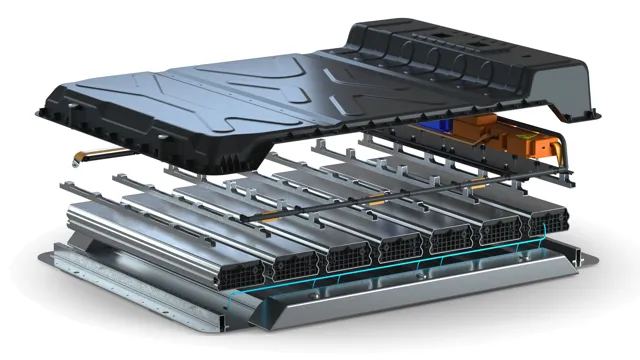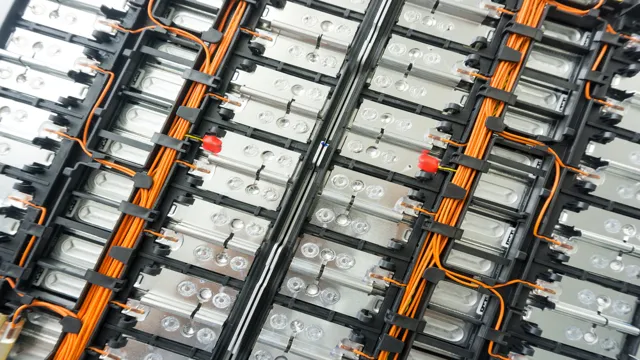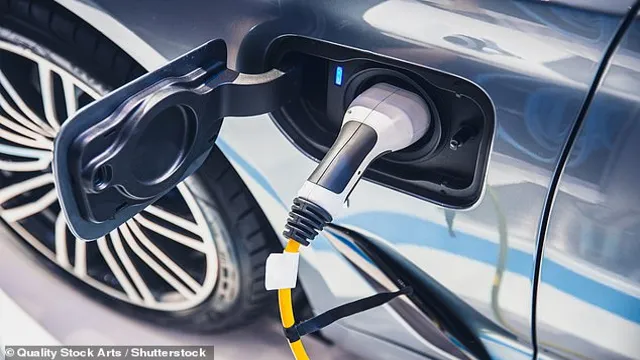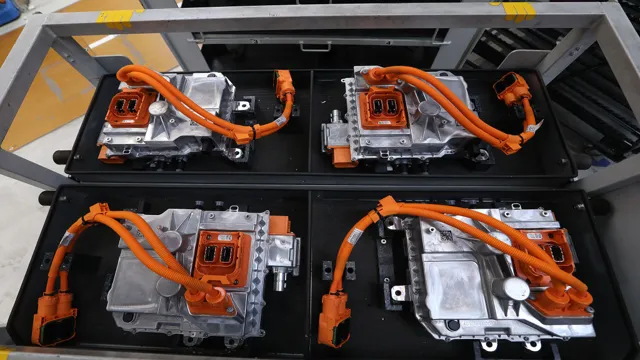Cooling Your Way to Electric Car Efficiency: The Importance of Electric Car Battery Cooling Systems
As the popularity of electric vehicles (EVs) continues to grow, one critical component’s importance becomes increasingly apparent- the battery. An electric car battery’s ability to store power, manage drains, and provide ample range is crucial for the overall success of the car. However, several challenges in designing an EV battery that is efficient, effective, and long-lasting still exist.
One challenge that stands out is how to keep the battery cool while it’s in use. Electric car battery cooling is a crucial aspect of an EV’s success, and its design plays a big role in the efficiency of these vehicles. In this blog, we will explore electric car battery cooling in detail, its importance, and how it works.
Overview of Electric Car Battery Cooling
Electric car battery cooling is a vital component of modern electric vehicles (EVs). With the growing use of EVs, there are hundreds of thousands of batteries that need to be cooled effectively to prevent overheating. This can lead to a shorter battery life, reduced power output and, in some cases, even fires.
The cooling system works by circulating a liquid coolant through a network of pipes or channels in the battery pack that helps to dissipate heat. There are several cooling methods available, such as air cooling, liquid cooling, and phase-change material cooling. Each method has its advantages and disadvantages, and the ideal cooling system will depend on the specific requirements of the EV in question.
To optimize battery performance, manufacturers must carefully design and implement a battery cooling system that effectively maintains the battery temperature.
Why Battery Cooling is Important
Electric car battery cooling plays a crucial role in ensuring the longevity and maximum performance of electric car batteries. Heat is generated during the charging and discharging processes of a battery, which can lead to high temperatures and affect the battery’s overall efficiency and lifespan. Through proper cooling systems, the battery’s temperature can be regulated, ensuring the battery stays at its optimal temperature range.
This is especially important in extreme temperatures such as hot summers or cold winters, as temperature fluctuations can impact the battery’s performance and lifespan. In a way, proper battery cooling is to an electric car battery what refrigeration is to food: it keeps it fresh, efficient, and long-lasting. If not properly cooled, electric car batteries may degrade faster and need to be replaced sooner, leading to increased costs and environmental waste.
Therefore, battery cooling is an integral part of electric car technology that should not be overlooked.
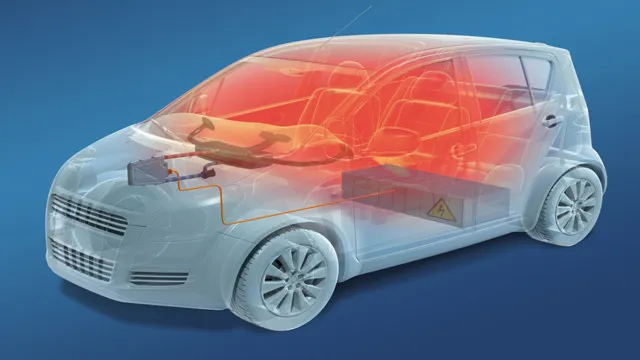
Types of Battery Cooling Systems
Electric car battery cooling plays a crucial role in ensuring the long-term health and performance of electric vehicle (EV) batteries. There are three main types of battery cooling systems: air-cooled, liquid-cooled, and active thermal management. Air-cooled systems are the simplest and most cost-effective, but they are not as effective at regulating temperature as the other two options.
Liquid-cooled systems use coolant to transfer heat away from the battery cells, and can maintain an optimal temperature range more consistently than air-cooled systems. Active thermal management goes a step further by using advanced sensors and algorithms to actively monitor and regulate the battery’s temperature. This can further extend the lifespan of the battery and enhance its performance.
So, whether you’re in the market for an EV or already own one, it’s always important to consider the type of battery cooling system it uses and understand how it affects the overall functionality of your electric vehicle.
Pros and Cons of Different Cooling Systems
When it comes to electric car battery cooling, there are several different systems to choose from, each with their own pros and cons. One option is air cooling, which is less expensive and simpler to install, but may not be as effective at keeping the battery at its optimal temperature. Liquid cooling, on the other hand, is more expensive and complex, but can provide better temperature regulation and extend the life of the battery.
Another option is active cooling, which uses a more advanced system of sensors and pumps to maintain optimal temperature, but can come with a higher cost. It’s important to consider factors such as budget, driving conditions, and the type of car when deciding which cooling system is best for your electric vehicle. Ultimately, a well-designed and maintained cooling system can help to ensure that your electric car’s battery operates at peak performance, maximizing its lifespan and efficiency.
Liquid Cooling
Liquid Cooling When it comes to cooling systems, there are a few options to choose from, each with its own set of pros and cons. One option many people consider is liquid cooling. Liquid cooling is a more advanced and efficient cooling system compared to traditional air cooling.
However, it can also be more expensive and require more maintenance. Liquid cooling systems use a liquid coolant, usually water, to absorb heat from the processor and other components before circulating it away from the system. This method is much more efficient than air cooling since water is much better at transferring heat than air.
As a result, the overall temperature of the computer is lower, leading to better performance and longer lifespan of components. On the downside, liquid cooling systems are more expensive and require more maintenance than air cooling systems. Since liquid cooling uses water, there’s always the risk of leaks, which can cause damage to the components.
Additionally, the installation process can be more complex and time-consuming compared to air cooling. Overall, liquid cooling can be a great option for those who want high performance and efficiency from their computer. However, it’s important to consider the cost and maintenance required before making the investment.
Air Cooling
Air cooling is one of the most common methods for cooling systems, and it has its own pros and cons. A major advantage is that air cooling systems are usually less expensive compared to other methods. It also doesn’t require any additional liquid systems, which makes it relatively easy to maintain and repair.
However, one downside is that air cooling relies on the ambient air temperature, which can be inconsistent and unpredictable. This can result in less efficient cooling during the hot summer months, which can lead to higher energy costs. Moreover, air cooling can make a lot of noise, which is another factor to consider.
Overall, while air cooling can offer some benefits, it’s important to weigh the advantages and disadvantages before deciding if it’s the right cooling system for your needs.
Phase Change Cooling
Phase Change Cooling When it comes to keeping our electronic devices at a safe operating temperature, there are various cooling methods available. One of the most efficient and effective cooling systems is phase change cooling. This system works by converting a liquid refrigerant into a gas, which then absorbs heat energy and turns back into a liquid through a condenser.
The main advantage of this type of cooling system is that it can provide incredibly low temperatures, as low as -80°C, making it ideal for high-performance computing applications. However, there are also some disadvantages to phase change cooling. For one, it can be expensive to install and maintain, and it requires a relatively large amount of space in order to accommodate the components.
Additionally, the system can be noisy and may require additional soundproofing measures. Despite these drawbacks, phase change cooling remains a popular choice among those who need efficient and reliable cooling for their high-performance computing systems.
Cost and Efficiency of Cooling Systems
When it comes to electric car battery cooling systems, cost and efficiency are two critical factors to consider. Cooling systems are necessary to maintain the optimal temperature of the battery, as overheating can cause irreparable damage. However, traditional cooling systems can be expensive and inefficient.
One solution that has emerged is the use of phase change materials (PCMs), which are substances that absorb and release thermal energy during phase transitions, such as melting and solidifying. PCMs can be integrated into the battery pack to provide passive cooling, reducing the need for active cooling systems. This approach not only lowers costs but also improves efficiency by reducing the amount of energy needed to maintain the battery’s temperature.
As the electric vehicle market continues to grow, innovative solutions like PCMs will become increasingly important for managing the cost and efficiency of battery cooling systems.
Comparing the Cost of Different Cooling Systems
When it comes to choosing the right cooling system, cost and efficiency are two major factors to consider. There are several types of cooling systems available in the market, including air conditioning, swamp coolers, and geothermal cooling. Each system has a different cost and requires a varying level of maintenance.
Air conditioning is the most popular and widely used cooling system, but it is also the most expensive and energy-consuming system. On the other hand, swamp coolers are an affordable option that uses less energy but is only effective in areas with low humidity levels. Lastly, geothermal cooling systems are the most energy-efficient option, but they require a significant upfront investment.
Ultimately, the best cooling system for you depends on your budget, location, and specific needs.
Impact of Cooling Systems on Battery Efficiency
When it comes to the efficiency of batteries, cooling systems play a vital role. However, cooling systems can also have a significant impact on the cost of battery production. The more complex and advanced the cooling system is, the more expensive it can be to integrate it into the battery.
On the other hand, a cheaper cooling system might not be as effective in maintaining proper temperatures, thereby decreasing the battery’s efficiency and overall performance. Therefore, manufacturers need to balance cost and efficiency when designing cooling systems for batteries. A well-designed cooling system can help extend a battery’s lifespan, reduce the risk of failure, and improve its overall performance.
However, it’s essential to keep in mind that the ideal cooling system for one battery might not be suitable for another due to their size, application, and temperature requirements. Overall, finding the perfect balance between cost and efficiency when it comes to cooling systems is crucial for achieving optimal battery performance.
Future of Battery Cooling Technology
As electric cars become more popular, battery cooling technology is becoming increasingly important. Proper temperature regulation can not only extend the lifespan of the battery, but also improve vehicle efficiency and safety. Currently, many electric cars use liquid cooling systems to keep their batteries at a consistent temperature.
However, advancements in thermoelectric technology may lead to more efficient and cost-effective solutions. Thermoelectric devices use the flow of electrons to transfer heat, eliminating the need for fluids and pumps. This could potentially reduce the weight and complexity of battery systems, while also improving overall efficiency.
As we move towards a more sustainable future, battery cooling technology will continue to play a crucial role in advancing electric car technology and reducing our reliance on fossil fuels.
Conclusion
In the world of electric cars, battery cooling is not just a matter of keeping the engine running smoothly – it’s all about keeping your cool. With electric vehicles offering unmatched efficiency, sustainability, and overall coolness on the road, it’s no wonder that battery cooling technology is one of the most important factors driving the industry forward. So whether you’re cruising down the highway at full speed or just taking a quick spin around the block, remember to keep your battery cool and your ride even cooler.
“
FAQs
Why is battery cooling important in electric cars?
Battery cooling is important in electric cars to maintain the optimal temperatures for the battery cells. This helps in reducing the battery degradation and prolonging its lifespan.
What are the common cooling methods used for electric car batteries?
The common cooling methods used for electric car batteries are liquid cooling and air cooling. Liquid cooling is more effective but also more expensive than air cooling.
How does excessive heat affect the performance of an electric car battery?
Excessive heat can reduce the efficiency of an electric car battery and lead to a faster rate of degradation. This can result in reduced driving range and overall performance of the vehicle.
Can battery overheating lead to safety concerns in electric cars?
Yes, battery overheating can pose safety concerns in electric cars as it can lead to thermal runaway or fire hazard. Thus, proper battery cooling systems are critical for the safety of electric vehicles.
